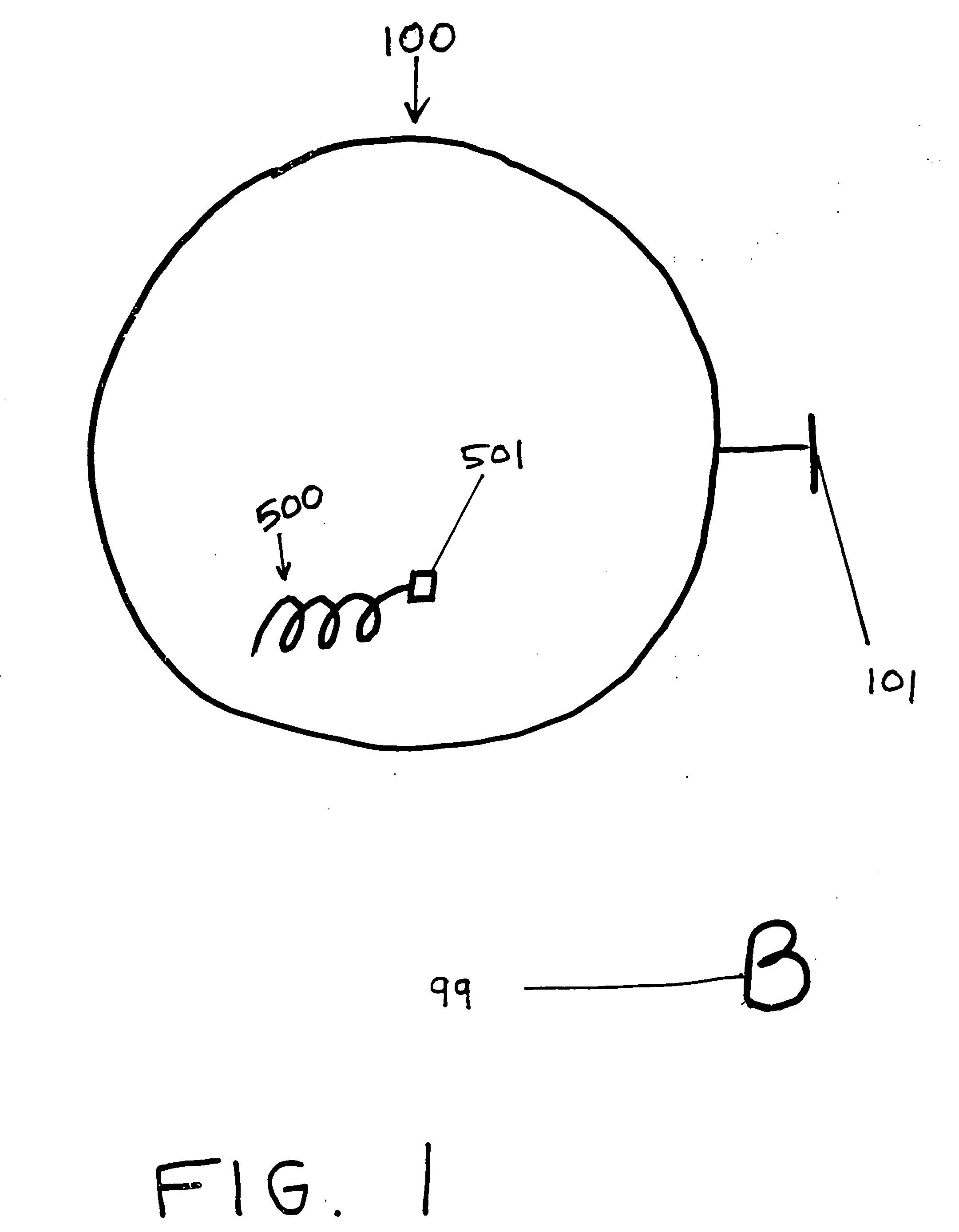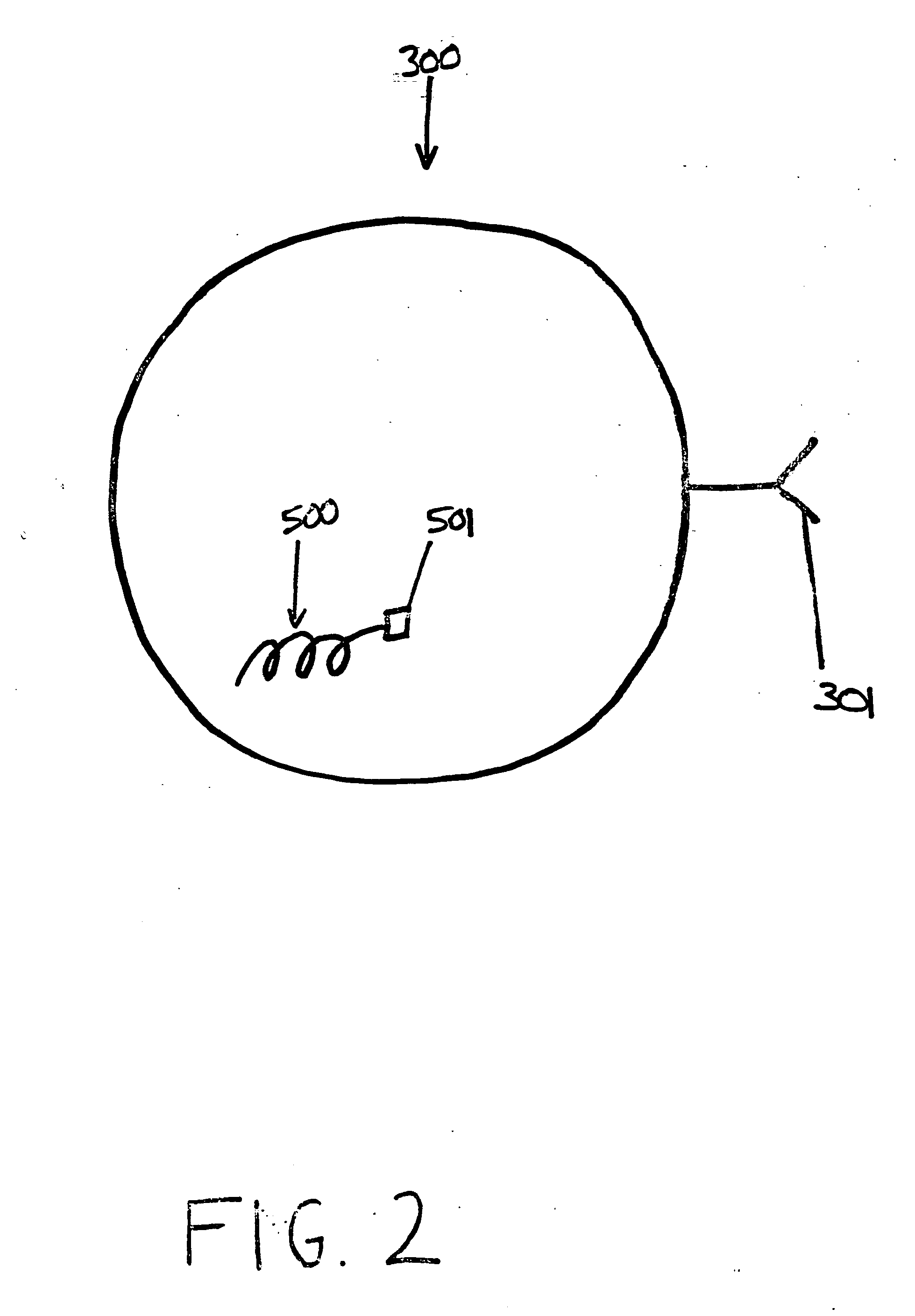The first serious deficiency of current cancer therapeutic approaches is that they do not take into account, and are unable to deal with, the heterogeneity of the
cancer cell population.
The inability of current approaches to circumvent this heterogeneity is illustrated by the failure of immuno-therapeutic approaches that rely on antigenic receptors on the surface of cancer cells to deliver therapeutic agents.
However, in practice, binary reagents do not result in the delivery of the cytotoxic agent to all cancer cells in the tumor
population because some cancer cells do not exhibit the particular antigenic
receptor.
High-
dose sniper killing, even when employed at
dose levels which kill many normal cells, fail to kill all cancer cells because some cancer cells are antigenic
receptor deficient, some cancer cells are super-resistant even before the treatment begins, and some cancer cells adapt to the therapeutic agent, survive, and become resistant to future treatments.
All these sniper strategies have failed, and are doomed to fail in the future, because they cannot deal with the fact that some normal cells also express the characteristics which is the target for the sniper killing, and because they cannot deal with the universally present heterogeneity and adaptive ability of cancer cells.
Notwithstanding the above-mentioned advances in the development of highly specific targeting agents to deliver the
cell killing agents specifically to targeted cells, and the demonstrated
cell killing ability of the particular delivered agents, therapeutic success through the use of binary reagents composed of targeting agents and toxic agents has not been achieved, and should not have been expected.
Unfortunately, in practice these therapies have been far less successful than they were hoped to be.
The second serious deficiency of binary reagents to carry cytotoxic agents to target cancer cells is that the so called “
cancer targeting agents” of which the binary reagents are made, also target a significant number of normal cells.
These targeted normal cells are also killed by the administration of binary reagents, cause unacceptable destruction of normal tissues, serious illness of the patient, and limit the aggressiveness of the
attack which can be launched against the cancer.
The third serious deficiency of binary reagents to carry cytotoxic agents to target cancer cells, particularly cytotoxic radioactive isotopes, is that they cause significant
systemic toxicity because the targeting agent carrying the cytotoxic agent is a large molecule which causes them to have a long
residence time in the
blood circulation, and causes them to be taken up non-specifically by normal cells.
The fourth serious deficiency of binary reagents to carry cytotoxic agents to cancer cells is that even those cancer cells which the targeting agents attaches to, outright killing of the
cancer cell is often not accomplished.
In large part this is due to the inherent limitations of the treatment method, i.e., the absolute quantity of cytotoxic agent which can be coupled to the targeting agent is smaller than that required to actually kill the
cancer cell (the small quantity of cytotoxic agent which can be attached is limited to avoid destroying the targeting ability of the targeting agent and to avoid adversely altering the distribution of the binary reagent in the host).
While the amount of cytotoxic agent which can be brought to bear on cancer cells through the use of binary reagents may be sufficient to damage some of the cells, the damage often is temporary or, indeed, simply results in the emergence of
mutant cells which are still cancerous and have become resistant to the effects of the cytotoxic agent.
The fifth serious deficiency of the binary reagents to carry cytotoxic agents is that it is impossible to make a valid choice of the most appropriate targeting agent to make the binary reagent for each cancer in each patient.
Furthermore, it is not possible to predict the outcome of the therapy prior to administering the binary reagent at the necessary cytotoxic
dose level.
The three step ADEPT approach fails to successfully treat cancer for the following reasons: (a) the bispecific reagent is bound to the non-endocytosing target cancer cells and also to some normal cells because the targeting agent
moiety does not exhibit exclusive cytotoxic specificity for cancer cells which reduces the tumor specificity of the non-mammalian enzyme location and pro-
drug conversion, (b) the antigenic receptors of the target cells are in a constant state of flux which prevents the bispecific reagent from remaining bound for a sufficient period of time to allow all bispecific reagent not bound specifically to the target
cell receptors to be eliminated from the body prior to administering the pro-
drug; (c) the soluble active
drug which is made by the enzyme diffuses away from its site of production to have a cytotoxic action on healthy normal cells; (d) the cells on which the bispecific reagent is bound, and where the active drug is formed, are the first cells to be killed because they receive the highest concentration of the active drug.
When these cells are killed, the enzyme will no longer be in a position to convert the pro-drug into an active drug and, therefore, the production of active drug is
self limiting; and (e) the shape and volume of the micro-region in which there is a sufficiently
high concentration of the active drug to kill cells is variable and ill-defined because the
diffusion parameters of the soluble active drug are dependent on the particular status of the blood capillaries and extra-cellular structures in the cancer, the parameters of the
diffusion varying from one location of the tumor to another.
The two strategies described above fail to generate Hot-Spots because the number of cytotoxic chemical or radioisotope agents which are delivered is small, the number being directly proportional to the relatively small number of antigenic receptors on the surface of the target cells.
In addition, the agents or isotopes do not remain in the correct location for long enough to achieve an aggressive
attack on the cancer, and furthermore, they cause
systemic toxicity because the agents circulate in the blood for a long period of time.
Finally these strategies also fail to locate the
attack specifically to the tumor, because the location where the agent or isotopes are delivered or where the active drug is made is dependent on only a single cancer associated characteristic on the cancer cell surface, and every single characteristic found on cancer cells is also found on some normal cells.
 Login to View More
Login to View More 


